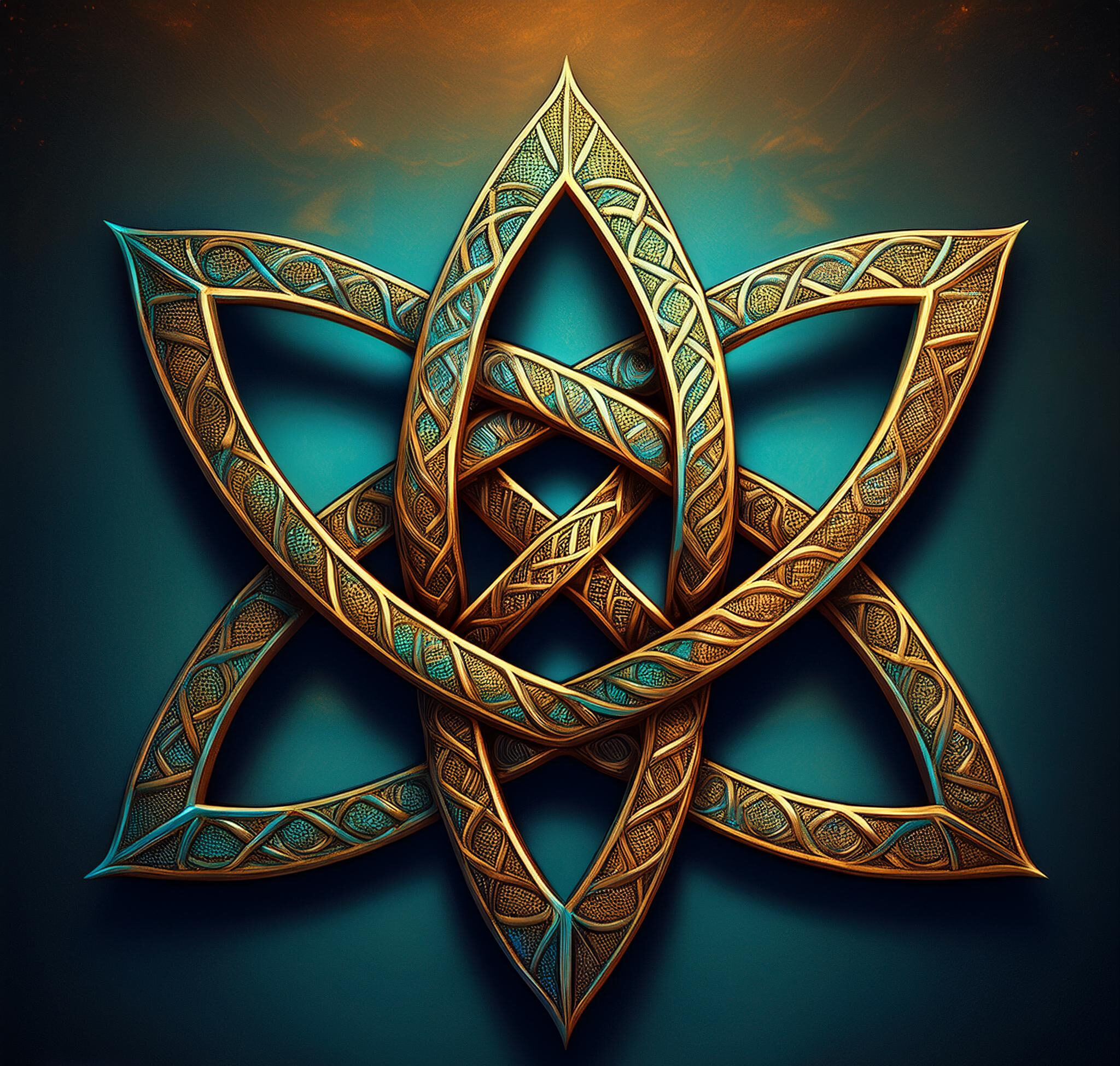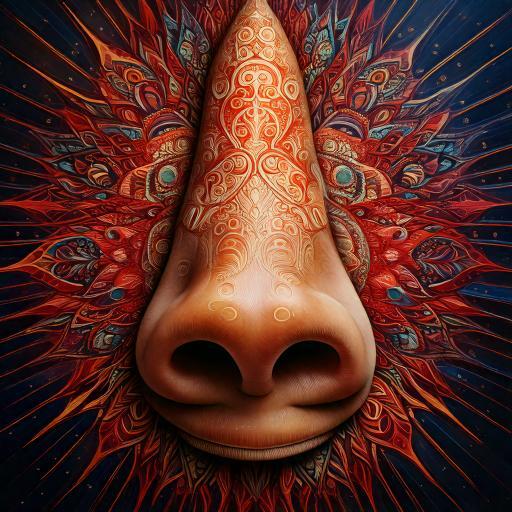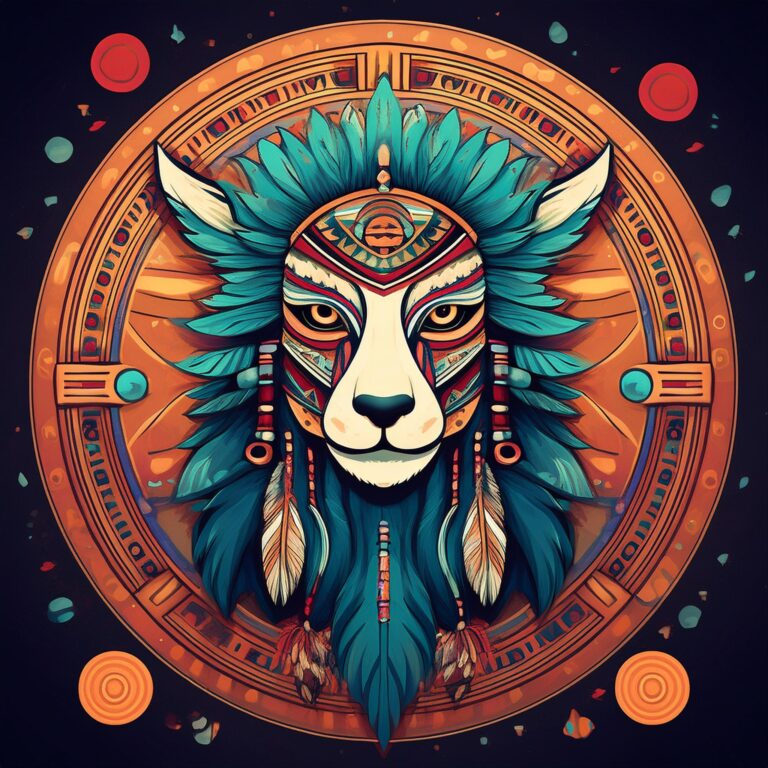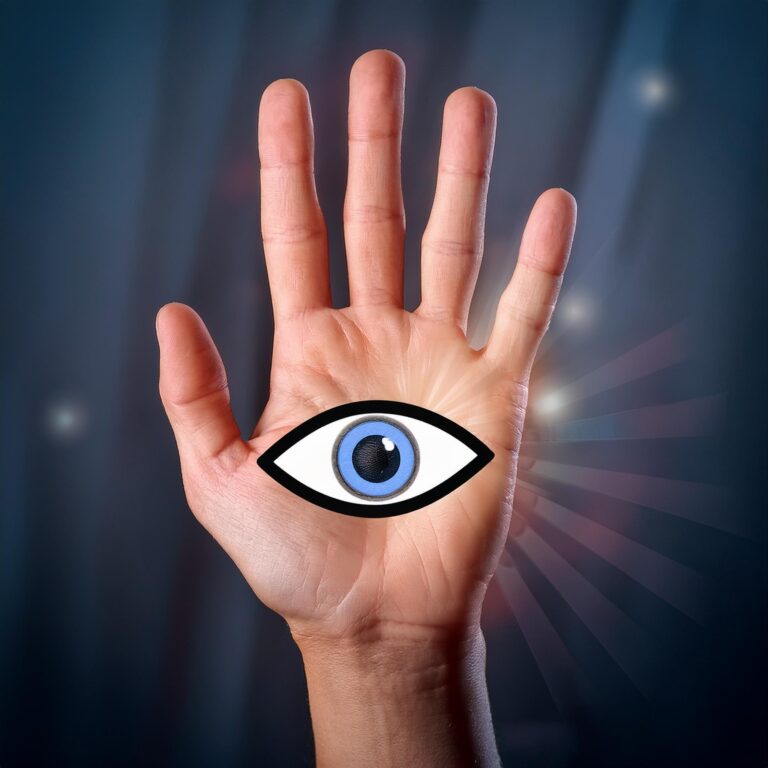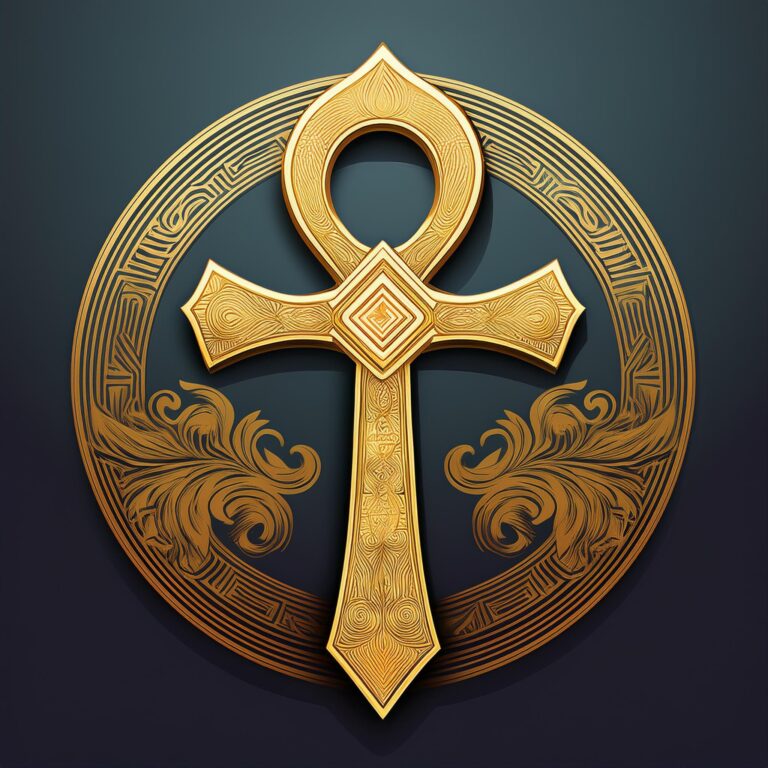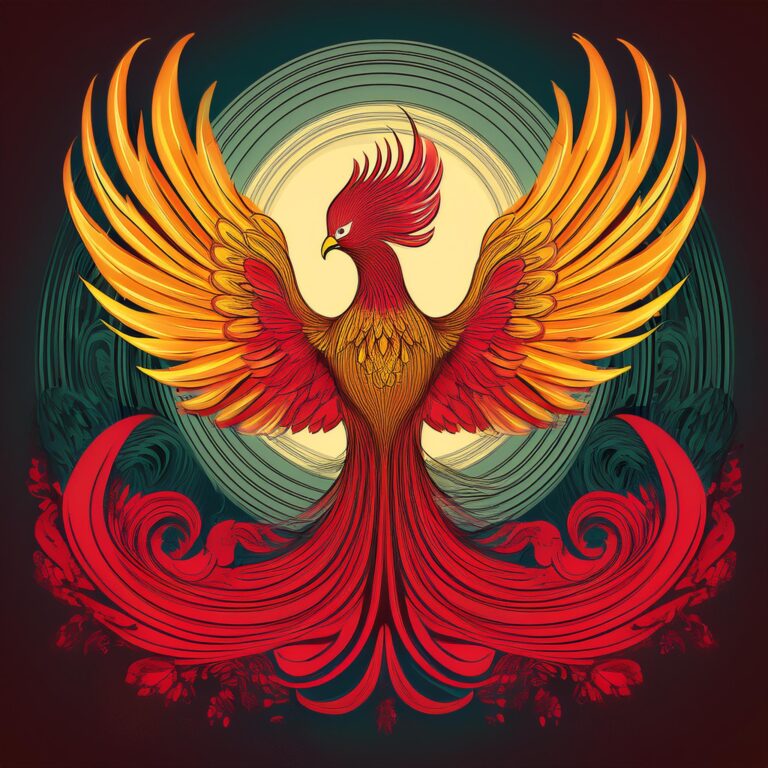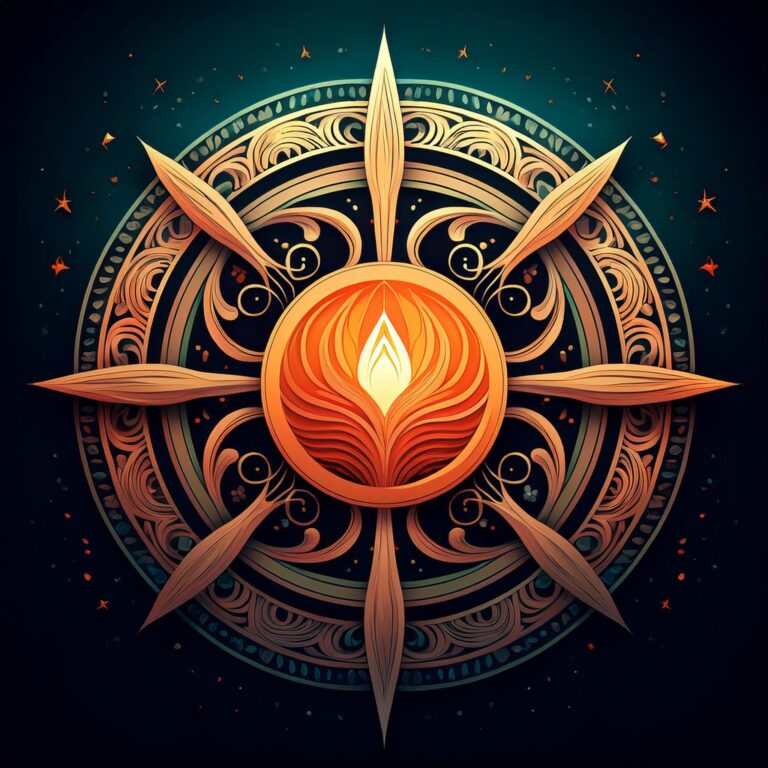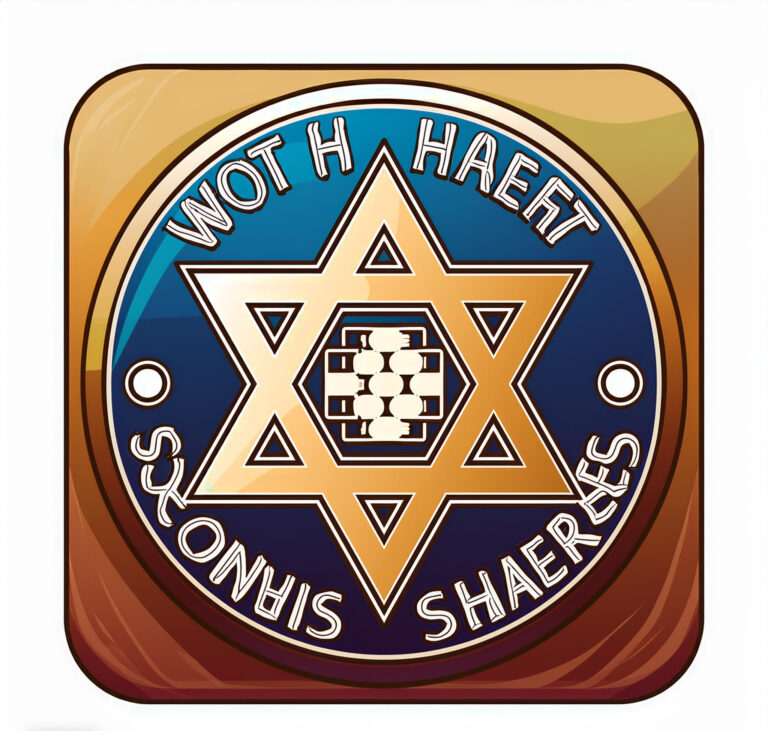The Trinity Knot, also known as the Triquetra, is a symbol that has captivated the imagination and reverence of many cultures throughout history. Its design is simple yet profound: three interlocking loops that form a continuous and unbroken pattern. While its roots are deeply intertwined with Celtic culture, the Trinity Knot has evolved to hold various meanings across different religions, philosophies, and artistic expressions.
In ancient Celtic culture, the Trinity Knot is believed to represent the interconnectedness of life, death, and rebirth. The Celts were a deeply spiritual people who saw the natural world as a reflection of the divine. For them, the number three held a sacred significance, symbolizing the triad of earth, sea, and sky, or the three stages of life: childhood, adulthood, and old age. The Trinity Knot, with its threefold design, became a powerful emblem of these concepts, embodying the unity and continuity of the universe.
With the spread of Christianity, the Trinity Knot took on a new layer of meaning. Christian missionaries in Ireland adopted the symbol to explain the Holy Trinity—Father, Son, and Holy Spirit. The three loops of the knot were seen as a perfect representation of the triune nature of God, three distinct beings that are eternally connected and indivisible. This adaptation allowed the Trinity Knot to become a bridge between the old Celtic traditions and the new Christian faith, preserving its spiritual significance while introducing it to a broader audience.
Today, the Trinity Knot is a symbol of love, eternity, and unity. It is often found in jewelry, tattoos, and art, representing a bond that cannot be broken. Whether it’s a symbol of one’s heritage, a spiritual belief, or simply an appreciation for its aesthetic beauty, the Trinity Knot continues to be a meaningful and powerful emblem in the modern world.
Historical Origins of the Trinity Knot
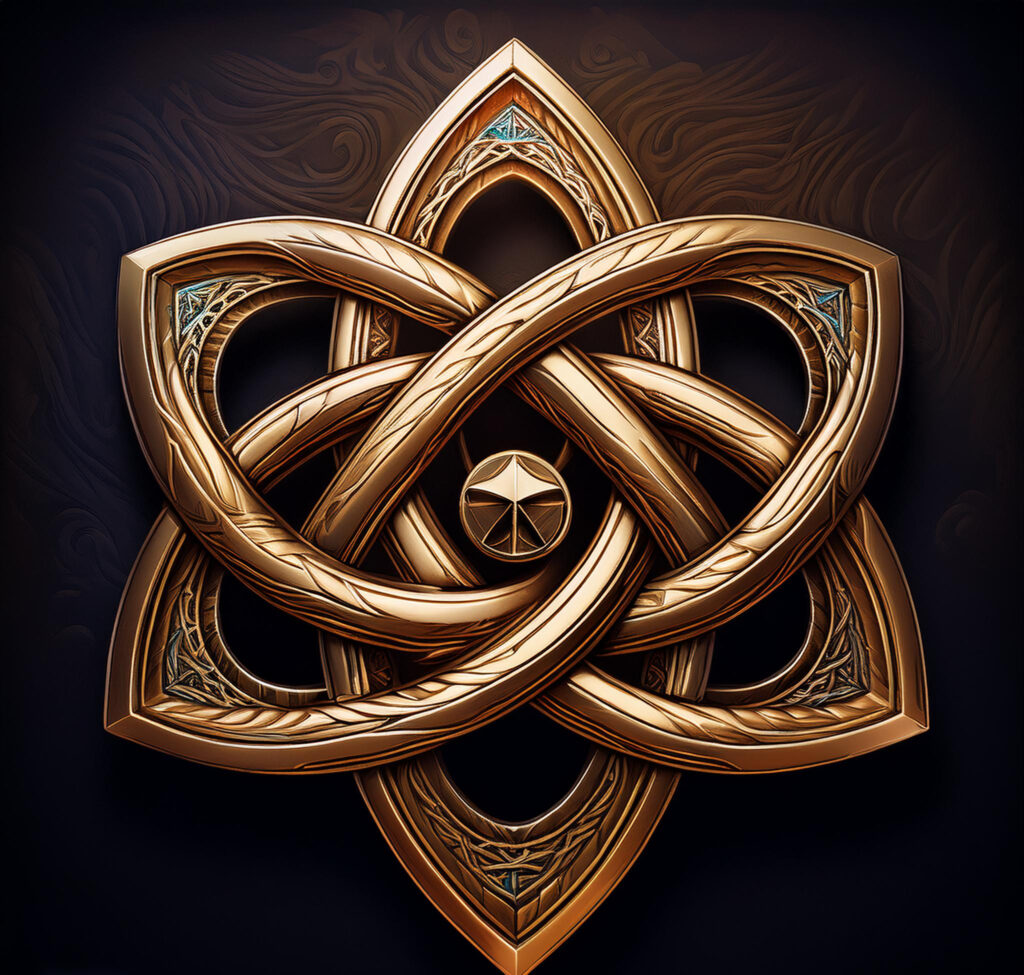
The Trinity Knot, also known as the Triquetra, has a history that stretches back thousands of years, deeply rooted in the ancient cultures of Europe, particularly among the Celts in Ireland, Scotland, and Wales. The Celts, renowned for their intricate art and symbolism, frequently used the Trinity Knot in their metalwork, stone carvings, and illuminated manuscripts. The design, featuring three interconnected loops, is thought to represent various elements of the natural world, such as earth, sea, and sky, or the cyclical nature of life, death, and rebirth. The Trinity Knot, much like the Griffin, symbolizes a powerful blend of natural and mystical elements, intertwining concepts of protection, strength, and the enduring cycles of existence.
In pre-Christian Celtic society, the number three was sacred, symbolizing important triads found in nature and spirituality. The Trinity Knot likely embodied these concepts, serving as a symbol of divine protection or as a representation of the eternal cycle of life. The continuous, unbroken line of the knot emphasized the idea of eternity and the interconnectedness of all things, resonating deeply with Celtic beliefs.
With the arrival of Christianity in Ireland in the 5th century, the Trinity Knot was reinterpreted to align with Christian teachings, specifically to represent the Holy Trinity—Father, Son, and Holy Spirit. This adaptation allowed the symbol to persist through the ages, blending seamlessly into both religious and cultural contexts.
Over time, the Trinity Knot became a powerful emblem of both Celtic identity and Christian faith, appearing in numerous ancient artifacts, from the Book of Kells to various stone crosses found across Ireland and Scotland. Its enduring presence is a testament to the symbol’s deep-rooted significance and its ability to transcend time and culture.
Historical Origins of the Trinity Knot
The Trinity Knot, or Triquetra, has a deep and ancient history that predates written records. This iconic symbol is most commonly associated with Celtic culture, where it played a significant role in art, religion, and daily life. The origins of the Trinity Knot are believed to date back to at least 500 BC, during a time when the Celts spread across Europe, bringing with them a rich tradition of symbolism and craftsmanship.
In early Celtic society, the Trinity Knot was often used in decorative arts, particularly in metalwork, stone carvings, and illuminated manuscripts. Its three interwoven loops are thought to represent a range of concepts important to the Celts, including the natural elements (earth, water, and air) and the stages of life (birth, life, and death). The unbroken, continuous line of the knot symbolized eternity and the interconnectedness of all things, a core belief in Celtic spirituality.
The number three held particular significance for the Celts, and this is reflected in the design of the Trinity Knot. The triadic structure was seen as a powerful symbol of balance and harmony in the universe. The Celts believed that all things come in threes, and this belief was deeply woven into their mythology, rituals, and symbols.
As Christianity spread through Ireland in the 5th century, the Trinity Knot was adopted by Christian missionaries who sought to integrate familiar Celtic symbols into their teachings. The three loops of the knot came to represent the Holy Trinity—Father, Son, and Holy Spirit—making the symbol a powerful tool for explaining Christian doctrine to the Celtic people. This blending of pagan and Christian symbolism allowed the Trinity Knot to endure, preserving its significance while acquiring new layers of meaning.
Today, the Trinity Knot remains a beloved symbol, not only of Celtic heritage but also of unity, eternity, and spiritual depth. Its historical roots and enduring popularity speak to the timeless appeal of its simple yet profound design.
The Trinity Knot in Celtic Culture

The Trinity Knot, also known as the Triquetra, holds a prominent place in Celtic culture, symbolizing some of the most fundamental aspects of life and spirituality. For the Celts, a people deeply connected to the natural world and its cycles, the number three was particularly sacred. This reverence for the triad is evident in the design of the Trinity Knot, which consists of three interlocking loops with no beginning or end, representing eternal continuity.
In Celtic culture, the Trinity Knot was often interpreted as a symbol of life’s most essential elements. It was believed to represent the triad of earth, sea, and sky—the three realms of the physical world that the Celts held in great reverence. This connection to nature was central to their belief system, where all things were seen as interconnected and cyclical.
The Trinity Knot also symbolized the passage of time and the cycle of life. The Celts viewed life as a continuous journey through birth, life, and death, with each stage leading seamlessly into the next. The endless loops of the Trinity Knot perfectly encapsulated this belief in the eternal nature of existence, where death was not an end, but a transition to another phase of being.
In addition to its connection with nature and life cycles, the Trinity Knot was often associated with spiritual and mystical concepts. It was believed to represent the unity of mind, body, and spirit, or the three stages of womanhood: maiden, mother, and crone. These interpretations highlight the knot’s role as a symbol of balance and harmony within the individual and the cosmos.
The Celts also used the Trinity Knot in various forms of art and decoration, from stone carvings and metalwork to illuminated manuscripts. It was a popular motif in their intricate knotwork designs, which were often used to adorn religious objects, monuments, and jewelry. The knot’s presence in these artifacts speaks to its importance as a symbol of protection, strength, and eternal life.
Even as the Celts transitioned to Christianity, the Trinity Knot retained its significance, albeit with new interpretations aligned with Christian doctrine. This enduring symbol continues to be a powerful emblem of Celtic heritage, reflecting the deep spiritual and cultural values of the Celtic people.
Spiritual Significance of the Trinity Knot
The Trinity Knot, with its elegant and continuous design, holds profound spiritual significance that transcends cultures and religions. This ancient symbol, also known as the Triquetra, has been revered as a representation of the divine and the interconnectedness of all things. Its three interlocking loops, forming a seamless and eternal pattern, speak to the spiritual essence of unity, balance, and the cyclical nature of life.
In its earliest interpretations, the Trinity Knot was seen as a powerful emblem of the natural world. The Celts, who first popularized this symbol, believed that the threefold structure of the knot mirrored the tripartite nature of the universe—earth, sea, and sky. This deep connection to nature reflected a worldview in which all elements were seen as parts of a greater whole, eternally linked and in balance. The unbroken line of the Trinity Knot was a reminder of the endless cycle of life, death, and rebirth, a central belief in Celtic spirituality.
As the Trinity Knot evolved, it began to take on additional layers of meaning. With the arrival of Christianity in Celtic lands, the symbol was adopted and reinterpreted to represent the Holy Trinity: Father, Son, and Holy Spirit. The three loops of the knot were seen as a perfect illustration of the Christian doctrine of one God in three persons, each distinct yet eternally connected. This adaptation of the Trinity Knot allowed it to bridge the gap between the old pagan traditions and the new Christian faith, preserving its spiritual resonance while introducing it to a broader religious context.
Beyond its Christian interpretation, the Trinity Knot has also been embraced by various spiritual and philosophical traditions. It is often seen as a symbol of the interconnectedness of mind, body, and spirit—the three essential aspects of human existence. This interpretation highlights the knot’s role as a reminder of the need for balance and harmony within oneself and with the universe.
In modern spirituality, the Trinity Knot is frequently associated with concepts of love, unity, and eternity. It is a popular symbol in rituals and ceremonies, representing the bond between individuals or the connection between the material and spiritual worlds. Whether worn as a piece of jewelry, displayed as art, or used in meditation, the Trinity Knot continues to inspire and evoke a sense of spiritual depth and continuity.
The enduring appeal of the Trinity Knot lies in its ability to convey complex spiritual truths through a simple and beautiful design. Its significance as a symbol of unity, balance, and the eternal cycle of life makes it a powerful emblem for those seeking to connect with the deeper aspects of existence.
Symbolism in Modern Times
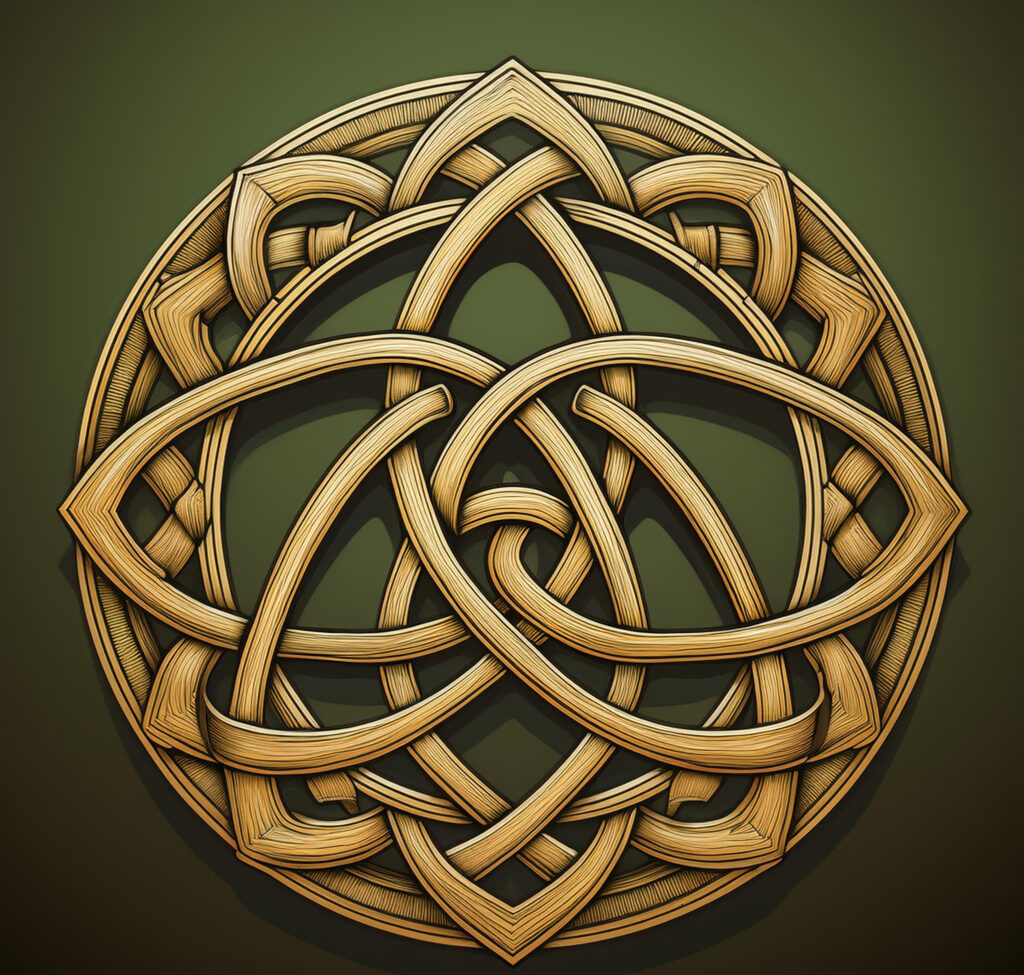
In the fast-paced world of today, ancient symbols like the Trinity Knot continue to resonate, carrying with them deep meanings that transcend time and culture. The Trinity Knot, with its simple yet profound design of three interlocking loops, has found a place in modern symbolism, where it represents concepts that are as relevant now as they were centuries ago.
One of the primary reasons for the enduring popularity of the Trinity Knot in modern times is its association with unity and interconnectedness. In a world where individuals often seek meaning and connection in a rapidly changing environment, the Trinity Knot serves as a reminder of the bonds that tie us together—whether it be within a family, a community, or the broader human experience. The knot’s unbroken design symbolizes the idea that, despite challenges and changes, certain connections remain eternal.
In contemporary spirituality and personal growth, the Trinity Knot is often used to represent the balance between mind, body, and spirit. This triad is central to many modern wellness practices, where achieving harmony among these three aspects of existence is seen as the key to a fulfilling life. The Trinity Knot’s representation of balance and wholeness makes it a popular symbol in practices such as yoga, meditation, and holistic healing, where it serves as a visual affirmation of one’s journey toward inner peace and equilibrium.
The Trinity Knot has also become a symbol of love and commitment in modern relationships. Its continuous loops are seen as a representation of eternal love and fidelity, making it a popular choice for engagement rings, wedding bands, and other romantic gestures. Couples often choose the Trinity Knot to signify a bond that is unbreakable, enduring through the trials of time and life. This modern interpretation of the symbol as a token of love echoes its ancient roots, where it was used to represent the interconnectedness of life’s most important elements.
Beyond personal and spiritual symbolism, the Trinity Knot has also found its place in popular culture. It frequently appears in art, fashion, and design, where it is appreciated not only for its aesthetic appeal but also for the depth of meaning it conveys. Whether incorporated into tattoos, jewelry, or home decor, the Trinity Knot serves as a reminder of the timeless values of unity, balance, and eternal connection.
In an increasingly complex and fragmented world, symbols like the Trinity Knot offer a sense of continuity and connection to something greater. Its enduring presence in modern times is a testament to its universal appeal and the way it continues to inspire and resonate with people across cultures and generations.
The Trinity Knot in Jewelry and Art
The Trinity Knot, with its timeless elegance and deep symbolism, has become a beloved motif in both jewelry and art. Its three interlocking loops, which have no beginning or end, make it a perfect representation of eternity, unity, and interconnectedness. This enduring symbol has been used for centuries to create pieces that are not only beautiful but also carry profound meaning.
In the world of jewelry, the Trinity Knot is often chosen for its rich heritage and its associations with love, loyalty, and eternal bonds. It is a popular design for engagement rings, wedding bands, and anniversary gifts, where it symbolizes a relationship that is meant to last forever. The unbroken lines of the knot represent a love that is eternal, unyielding, and intertwined, making it an ideal choice for couples who wish to express their commitment to one another.
The Trinity Knot is also frequently seen in necklaces, bracelets, and earrings, where it serves as a reminder of the wearer’s heritage, spiritual beliefs, or personal values. Many people choose to wear the Trinity Knot as a symbol of their connection to their Celtic roots, or as a talisman of protection and guidance. The design’s simplicity and elegance make it versatile, able to be incorporated into both traditional and contemporary styles, whether in gold, silver, or other materials.
Beyond its use in jewelry, the Trinity Knot is a popular motif in art, particularly in Celtic-inspired designs. Artists often use the Trinity Knot to convey themes of eternity, spiritual growth, and the interconnectedness of all things. The knot’s intricate design lends itself to various forms of artistic expression, from detailed illustrations and paintings to sculptural works and tattoos. In these contexts, the Trinity Knot is not just a decorative element but a symbol that carries deep meaning for both the artist and the viewer.
In modern art, the Trinity Knot is often incorporated into designs that blend ancient symbolism with contemporary aesthetics. It appears in everything from abstract art to graphic design, where it continues to be a powerful symbol of unity, balance, and harmony. The knot’s enduring appeal lies in its ability to convey complex ideas through a simple, yet profound, design.
The Trinity Knot’s presence in both jewelry and art reflects its universal and timeless appeal. Whether worn as a piece of jewelry or admired in a work of art, the Trinity Knot continues to inspire and resonate, connecting people to the rich traditions and deep meanings that it represents.
How to Interpret the Trinity Knot in Different Contexts
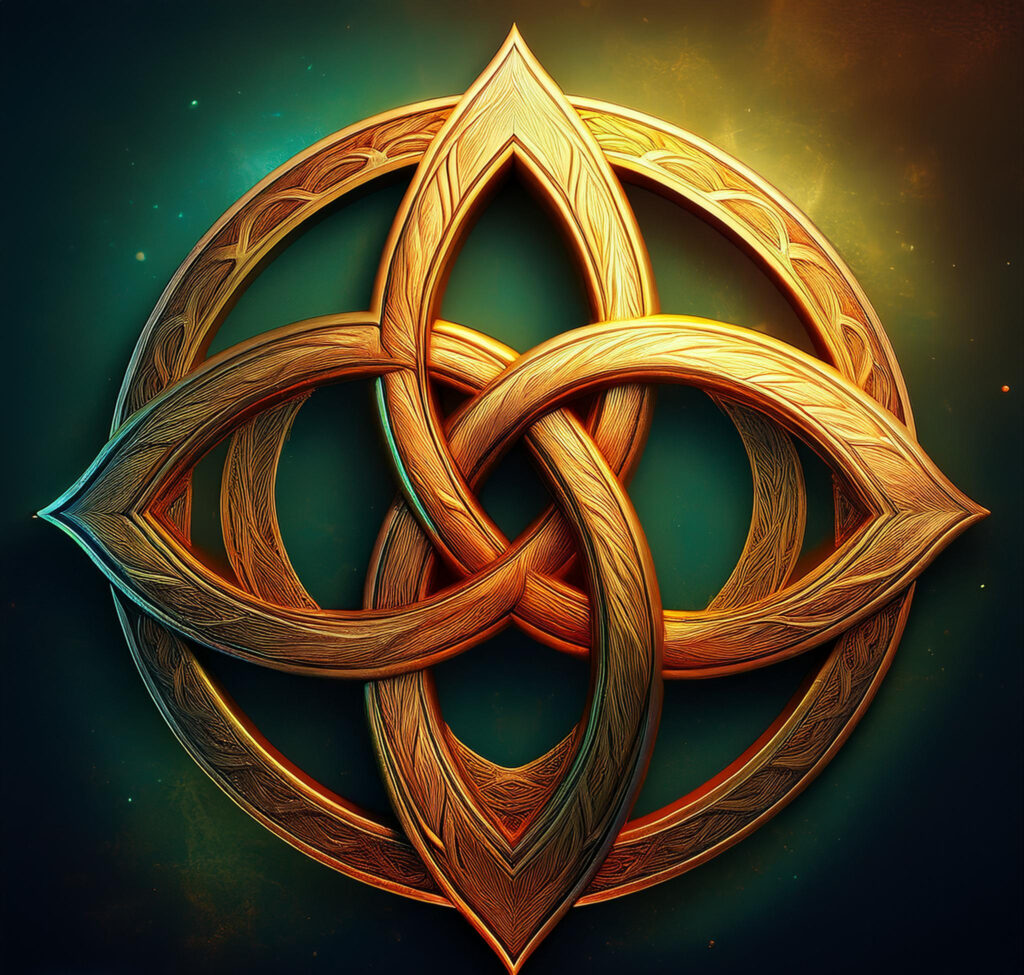
The Trinity Knot, with its elegant and interwoven design, is a symbol rich in meaning that can be interpreted in various ways depending on the context in which it is used. Whether in spiritual, cultural, or personal settings, the Trinity Knot carries multiple layers of significance that reflect its timeless appeal and versatility.
Spiritual Contexts
In spiritual contexts, the Trinity Knot is often associated with themes of unity, balance, and the eternal cycle of life. For the Celts, it represented the interconnectedness of the natural world—earth, sea, and sky—as well as the cyclical nature of existence: birth, life, and death. When adopted into Christian symbolism, the Trinity Knot took on a new meaning, representing the Holy Trinity of Father, Son, and Holy Spirit. In this context, the three loops signify the three distinct persons of the Godhead, united in one divine essence. Those who use the Trinity Knot in a spiritual setting often see it as a reminder of their faith, the unity of creation, or the interconnectedness of all things.
Cultural Contexts
Culturally, the Trinity Knot is most closely associated with Celtic heritage. It appears in ancient manuscripts, stone carvings, and traditional jewelry, where it often serves as a symbol of identity and continuity. In this context, the Trinity Knot is a powerful emblem of Celtic pride, representing the enduring legacy of a culture that has deeply influenced art, literature, and spirituality across the world. For those of Celtic descent or those who feel a connection to this culture, the Trinity Knot can symbolize a link to their ancestry and the timeless values of their forebears.
Personal and Relational Contexts
On a personal level, the Trinity Knot is frequently interpreted as a symbol of love, loyalty, and eternal bonds. In this context, the three loops of the knot may represent different aspects of a relationship—such as love, trust, and respect—or the enduring connection between partners, family members, or close friends. Many people choose the Trinity Knot for wedding bands, engagement rings, or other meaningful gifts, as it symbolizes a commitment that is unbreakable and everlasting. The knot’s continuous design is a reminder that true relationships are resilient and infinite, capable of withstanding the tests of time.
Artistic and Symbolic Contexts
In artistic and symbolic contexts, the Trinity Knot is often used to convey themes of harmony, balance, and unity. Artists and designers might incorporate the knot into their work to evoke these concepts, whether in visual art, architecture, or design. The Trinity Knot’s geometric simplicity makes it a versatile symbol that can be adapted to various styles and mediums, while still maintaining its profound significance. In this context, it serves as a visual metaphor for the interconnectedness of all things, or the idea that life, though complex and multifaceted, is ultimately unified by a deeper order.
Modern Interpretations
In modern times, the Trinity Knot continues to be a symbol that evolves with new interpretations and uses. It might represent the unity of past, present, and future, the balance of physical, emotional, and spiritual well-being, or even the threefold nature of life’s journey—learning, experiencing, and growing. As society changes, so too does the meaning of the Trinity Knot, reflecting the values and beliefs of those who embrace it.
Reader’s Most Asked Symbols
Our readers frequently inquire about a variety of symbols that, like the Trinity Knot, carry deep and often complex meanings. These symbols span different cultures, religions, and periods in history, yet they all share a common thread—each one holds a significant place in the human quest for understanding the mysteries of life, spirituality, and the universe. Here, we explore some of the most commonly asked-about symbols and their interpretations.
1. The Ankh
One of the most iconic symbols from ancient Egypt, the Ankh represents life and immortality. Often referred to as the “key of life,” the Ankh was used in hieroglyphs and religious art, symbolizing the eternal life that was believed to follow death. It is frequently depicted being held by Egyptian gods and pharaohs, emphasizing its importance in both earthly and divine realms. Today, the Ankh remains a powerful symbol of life, spirituality, and the eternal nature of the soul.
2. The Ouroboros
The Ouroboros, a serpent or dragon eating its own tail, is an ancient symbol that has appeared in various cultures throughout history. It is often interpreted as a representation of the cyclical nature of the universe, life, and time—endlessly renewing and repeating. In alchemy, the Ouroboros symbolizes the unity of all things, where the beginning and the end are one and the same. This symbol continues to captivate those who are drawn to its profound message of continuity and eternal return.
3. The Tree of Life
The Tree of Life is a symbol that appears in many different cultures, from ancient Mesopotamia to Norse mythology and beyond. It typically represents the connection between the heavens, earth, and the underworld, as well as the interconnectedness of all living things. The Tree of Life is often seen as a symbol of growth, strength, and the cycle of life, death, and rebirth. In modern times, it remains a popular motif in art, jewelry, and spiritual practices, symbolizing harmony and balance.
4. The Yin-Yang
Originating from ancient Chinese philosophy, the Yin-Yang symbol represents the duality of existence—how seemingly opposite forces are interconnected and interdependent in the natural world. Yin and Yang are complementary, rather than opposing, and together they form a whole. This symbol is a cornerstone of Taoist beliefs and is often used to illustrate the balance between light and dark, male and female, and other dualities that exist in life.
5. The Pentacle
The Pentacle, a five-pointed star enclosed within a circle, is a symbol with roots in ancient paganism and is commonly associated with Wicca and other neopagan traditions. Each point of the star represents one of the five elements: earth, air, fire, water, and spirit. The circle surrounding the star symbolizes the unity and interconnectedness of these elements. The Pentacle is often used in rituals and ceremonies as a protective symbol, and it is also seen as a representation of balance and harmony within nature and the self.
6. The Eye of Horus
Another powerful symbol from ancient Egypt, the Eye of Horus represents protection, healing, and restoration. According to myth, Horus lost his eye in a battle, and it was later restored by the god Thoth, symbolizing the process of regeneration. The Eye of Horus was commonly used as an amulet for protection against evil and to bring good health. Even today, it remains a widely recognized symbol, often associated with protection and good fortune.
These are just a few of the symbols that our readers frequently ask about, each carrying its own unique significance and history. Whether used in spiritual practice, personal expression, or as part of cultural traditions, these symbols continue to resonate with people today, offering insights into the deeper meanings of life and existence.
Similar Symbols to the Trinity Knot
The Trinity Knot is a powerful symbol with deep meanings, but it is not the only symbol with such a rich background. Many other symbols across different cultures and religions share similar themes of unity, eternity, and interconnectedness. Below is a comparison of the Trinity Knot with some similar symbols, highlighting their unique characteristics and meanings.
| Symbol | Origin | Meaning | Visual Description |
|---|---|---|---|
| Triquetra | Celtic | Unity, protection, the triple goddess | Three interlaced arcs forming a triangular knot |
| Triskelion | Ancient Greek, Celtic | Progress, action, cycles | Three spiral arms radiating from a central point |
| Ouroboros | Ancient Egypt, Norse | Eternity, life, death, and rebirth | A serpent or dragon eating its own tail |
| Valknut | Norse | The afterlife, Odin, warriors’ honor | Three interlocked triangles |
| Ankh | Ancient Egypt | Life, immortality | A cross with a loop at the top |
| Yin-Yang | Ancient China | Balance, duality, harmony | A circle divided into black and white swirls |
| Celtic Cross | Celtic | Faith, eternal life, the four elements | A cross with a circle at the intersection |
Triquetra
The Triquetra, often confused with the Trinity Knot, is another ancient Celtic symbol that represents the concept of three-in-one. Though it shares a similar shape with the Trinity Knot, the Triquetra typically emphasizes unity and protection. It is also closely associated with the triple goddess in pagan traditions, symbolizing the maiden, mother, and crone.
Triskelion
The Triskelion, with its three spiraling arms, is another symbol that shares the Trinity Knot’s emphasis on the number three. It is often interpreted as a symbol of progress, cycles, and movement. The Triskelion is widely seen in both ancient Greek and Celtic cultures, where it represented the flow of time and the eternal cycle of life.
Ouroboros
The Ouroboros, a serpent or dragon eating its own tail, is a symbol of eternity, representing the cyclical nature of the universe. While it does not directly resemble the Trinity Knot, it shares the concept of endlessness and continuity. The Ouroboros is found in various cultures, including Egyptian and Norse mythology.
Valknut
The Valknut, a Norse symbol consisting of three interlocked triangles, is associated with the god Odin and the afterlife. Like the Trinity Knot, it symbolizes interconnectedness, but it is more specifically linked to warriors and the passage to the afterlife.
Ankh
The Ankh, an Egyptian symbol of life and immortality, differs visually from the Trinity Knot but shares a similar symbolic depth. It represents the eternal life that transcends death, much like the Trinity Knot’s representation of the eternal cycle.
Yin-Yang
The Yin-Yang symbol from ancient Chinese philosophy represents duality and balance. While it differs in appearance, it shares the Trinity Knot’s theme of harmony and the interconnectedness of opposing forces.
Celtic Cross
The Celtic Cross, another symbol from Celtic tradition, combines a cross with a circular ring. It represents the unity of faith and the eternal life promised by Christianity, similar to the spiritual interpretations of the Trinity Knot.
Frequently Asked Questions (FAQ)
When it comes to the Trinity Knot, our readers often have a variety of questions about its meanings, origins, and uses. Below, we’ve compiled answers to some of the most frequently asked questions about this ancient and enduring symbol.
The Trinity Knot, also known as the Triquetra, is a symbol that represents interconnectedness, unity, and eternity. It has been interpreted in various ways across different cultures and religions, including representing the Holy Trinity in Christianity (Father, Son, and Holy Spirit), the three elements of nature in Celtic tradition (earth, sea, and sky), or the cycle of life (birth, life, and death).
The exact origins of the Trinity Knot are somewhat unclear, but it is widely associated with Celtic culture and art. It is commonly found in ancient Celtic manuscripts, stone carvings, and metalwork. The symbol gained prominence during the early Christian period in Ireland, where it was incorporated into religious art and used to represent the Holy Trinity.
While the Trinity Knot is often associated with Christianity and the Holy Trinity, it is not exclusively a religious symbol. It also holds significance in pre-Christian Celtic culture and is used in various other spiritual and philosophical contexts. Many people appreciate the Trinity Knot for its universal themes of unity and eternity, regardless of religious belief.
Yes, the Trinity Knot is a popular motif in jewelry, often used to symbolize eternal love, unity, and connection. It is commonly seen in rings, necklaces, bracelets, and earrings, both in traditional Celtic designs and more contemporary styles. The unbroken loops of the knot make it an ideal symbol for expressing lasting bonds and relationships.
The Trinity Knot and the Triquetra are often used interchangeably, as they share similar designs and meanings. However, the term “Triquetra” is more commonly used to describe the general three-part shape, while “Trinity Knot” specifically refers to its interpretation as a symbol of the Holy Trinity in Christian contexts. Both symbols emphasize the concept of three-in-one and the unity of different elements.
Other symbols that share similar themes with the Trinity Knot include the Triquetra, Triskelion, Ouroboros, Valknut, Ankh, Yin-Yang, and Celtic Cross. Each of these symbols represents interconnectedness, eternity, or unity in different cultural and spiritual traditions
Absolutely! The Trinity Knot is a versatile and timeless symbol that can be incorporated into various forms of modern art and design. Whether in graphic design, tattoos, home decor, or fashion, the Trinity Knot’s simple yet profound design lends itself well to contemporary aesthetics while retaining its deep symbolic meaning.
When choosing the Trinity Knot as a personal symbol, consider what aspects of its meaning resonate most with you. Whether you connect with its spiritual significance, its representation of eternal love, or its cultural heritage, the Trinity Knot can serve as a powerful reminder of the values and beliefs that are important to you.

I’m the editor at SymbolsSays, where I explore the deeper meanings of symbols in mythology, art, literature, and psychology. My goal is to provide insights into how symbols influence our lives and connect us to our past.
